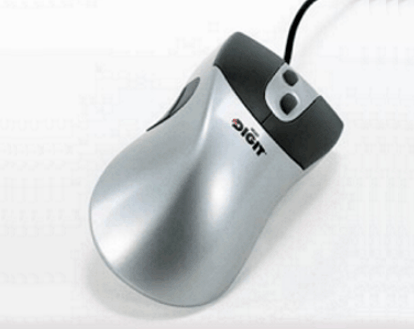computer mouse
A computer mouse is an input device for a manual function input into a computer and belongs to the Human Interface Devices( HID). The computer mouse is used for simplified input of commands and can be guided two-dimensionally on a flat surface. Synchronously with the mouse movement, the cursor moves across the screen.
In the classic computer mouse, scanning is performed by a rolling ball, usually made of rubber, which rotates two rollers in the X-direction and Y-direction. The rollers provide position information that is periodically scanned and processed by the computer in absolute or relative values. This technique has now been superseded by optical scanning methods, as implemented in optical mice.
On the computer mouse there are some function keys which are activated by single or double clicking. Clicking on one of the buttons attached to the scrolling device can trigger an action, such as starting a program or initiating a data connection. For example, computer mice have a knurl and rocker buttons. The knurl can be used to scroll pages, and when the knurl is pressed, scrolling can occur automatically in all four directions.
Instead of moving mechanics with a rubber ball, however, scanning can also be performed via a photodetector that works as a light sensor, as in optical computer mice.
Important criteria of the mouse, besides ergonomics, are the resolution, which ranges from a few hundred dots per inch( dpi) to 2,000 dpi for optical mice. The mouse is connected to the personal computer( PC) with a cable. Wireless mice transmit wirelessly via short-range radio, Bluetooth mice via the Bluetooth network, and infrared mice via an infrared connection.

